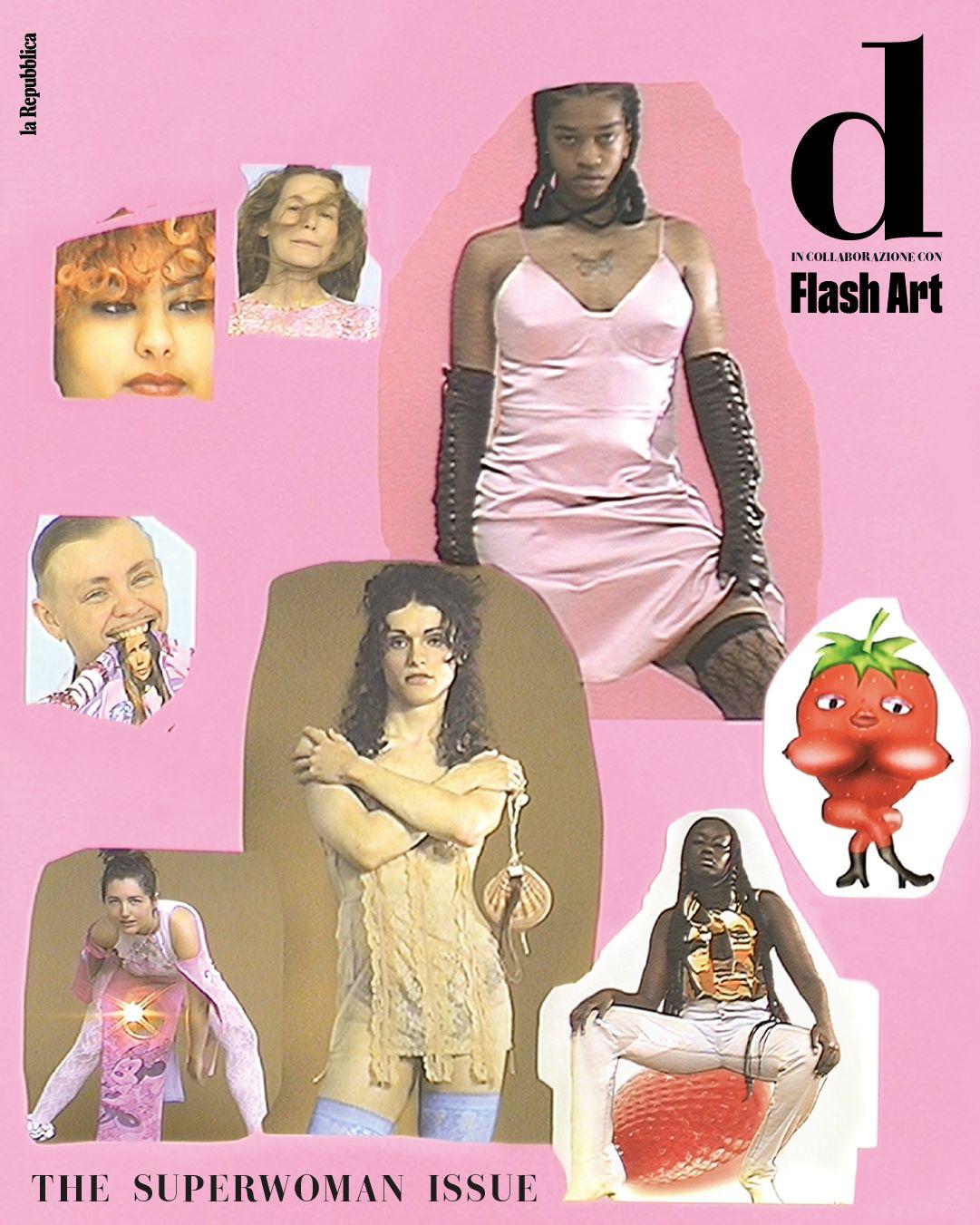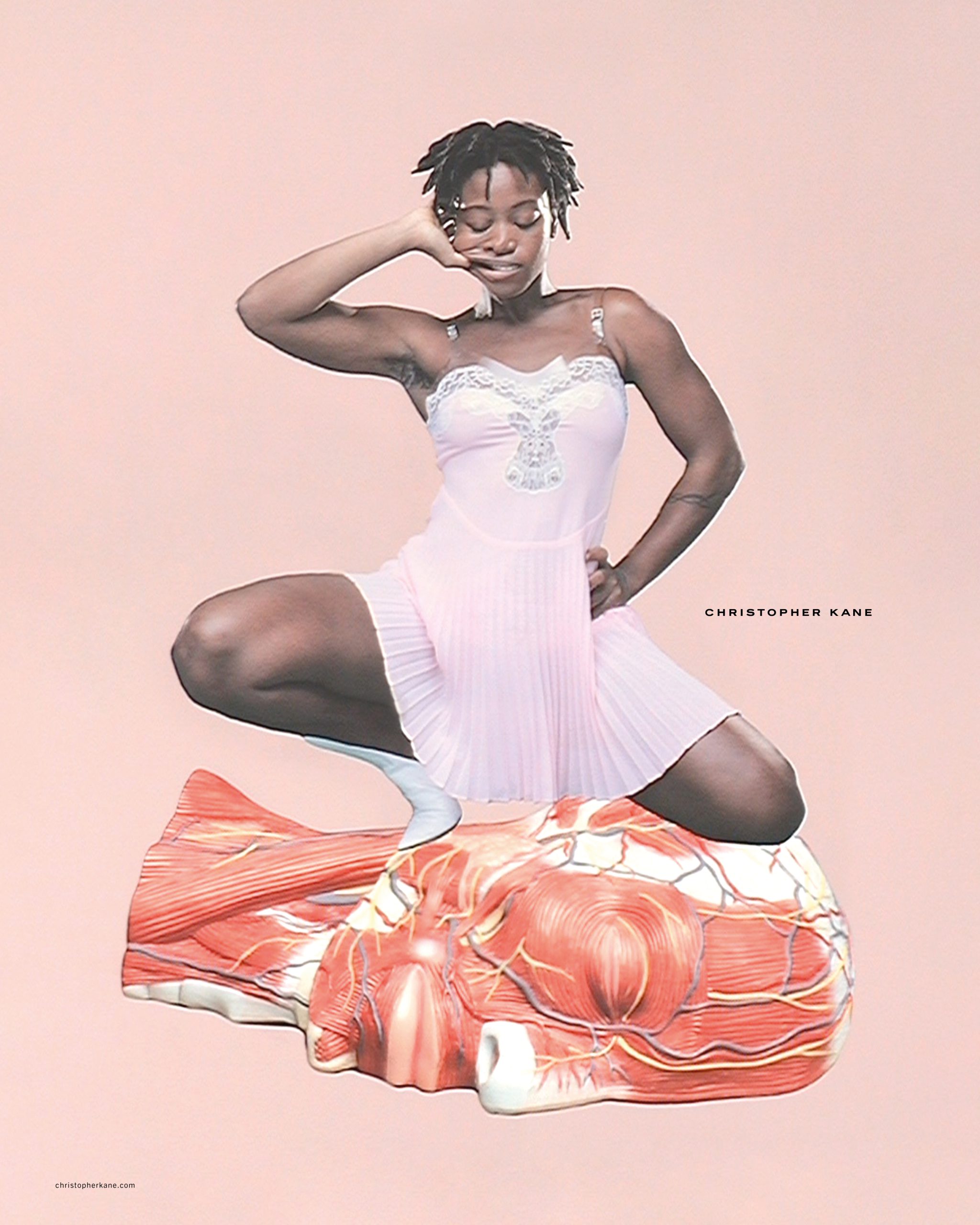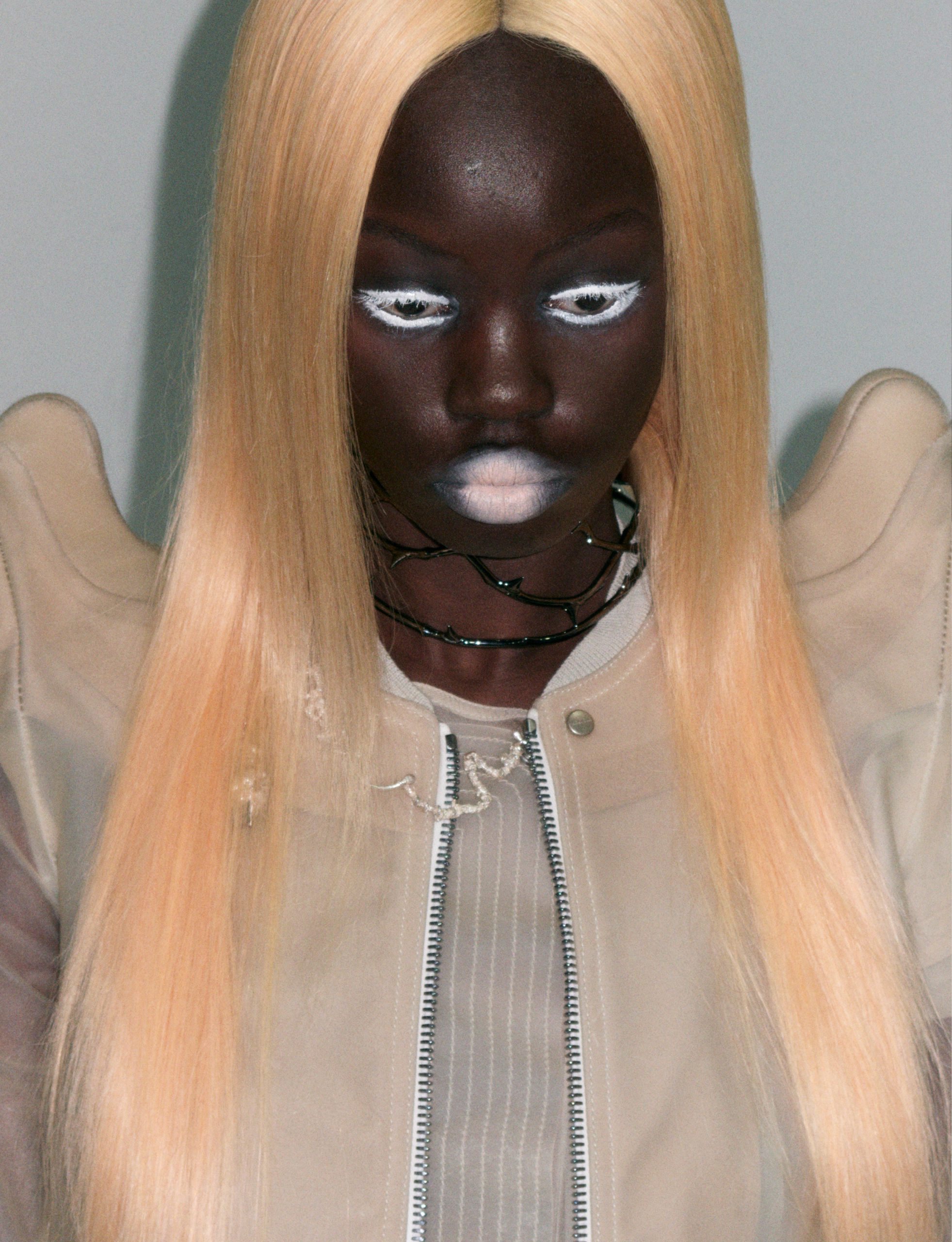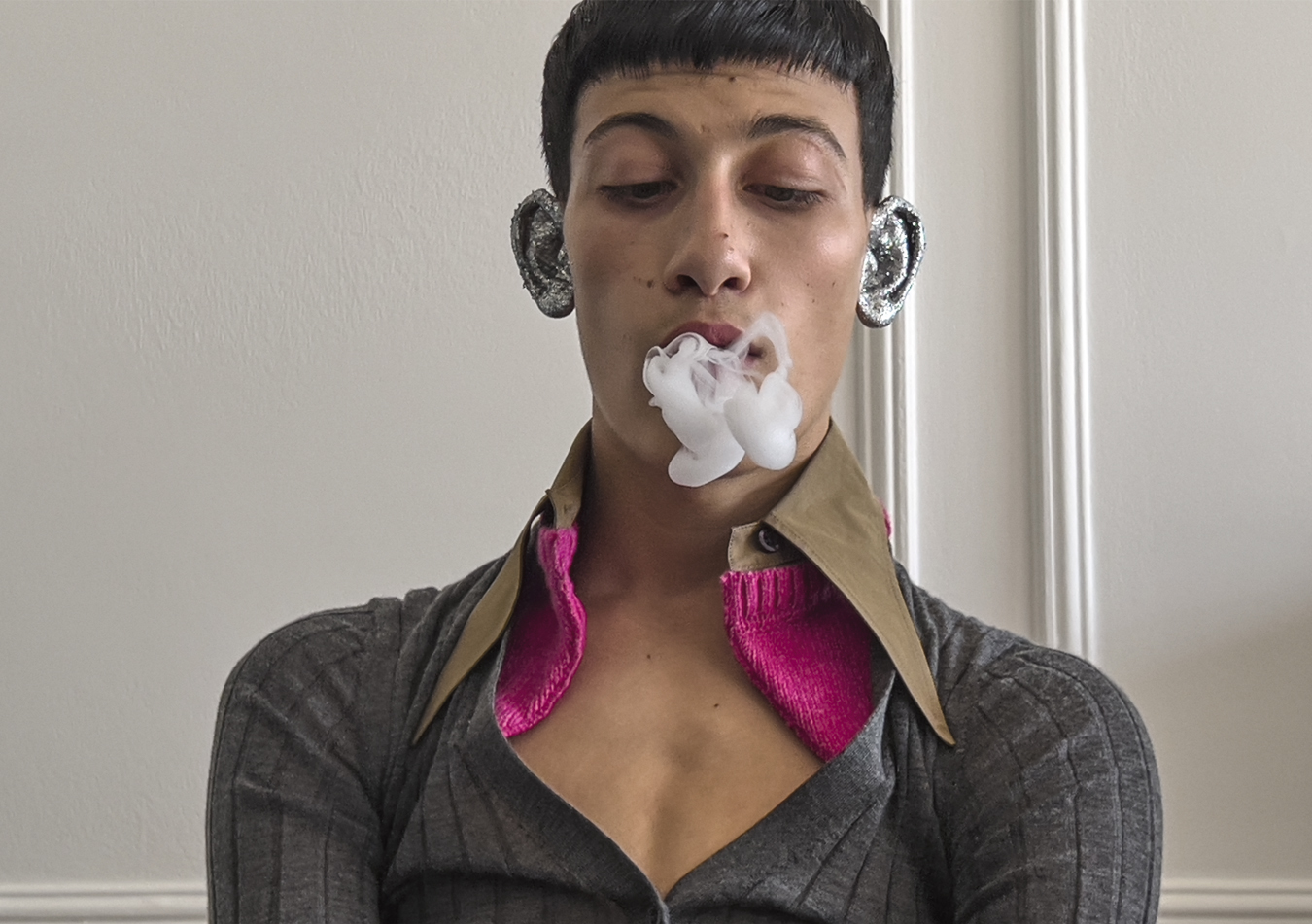Emma Matell didn’t envision herself becoming a casting director when she was growing up, but mandatory work experience while she was at school led her to a model agency in Copenhagen, where she grew up. Piquing her interest, she cut her teeth at various agencies including IMG London, before going it alone. She’s returned to her birthplace in the years since, casting shows for burgeoning brands like Paolina Russo, Nickolas Skovgaard and Holzweiler at Copenhagen Fashion Week. Now based in London, Matell is at the forefront of casting directors pushing for radical representation, seen via projects for Vivienne Westwood, Diesel, and Christopher Kane. Elsewhere, she’s worked with creatives like Sharna Osborne and Carlijn Jacobs for titles including The Face, Dazed, and The Gentlewoman.
Yet it’s her ongoing collaboration with designer Sinéad O’Dwyer that best represents her inclusive attitude that’s still much-needed in fashion. Since the brand’s S/S 23 show debut, Matell and O’Dwyer have continued to raise the bar on their own expectations of what a ‘diverse’ cast looks like – consistently featuring models of different sizes, ages, and abilities. Models.com contributor Dominic Cadogan spoke to Matell about her entry into casting, what she looks for in new faces, and the current roadblocks hindering an inclusive future in fashion.
How did you first get into casting?
Casting was something I got into when I was really young, but I sort of fell into it. I was really interested in doing photography and was shooting a lot for myself. While I was at school, I applied for a bunch of model agencies in Copenhagen, where I grew up and ended up interning for a week at an agency called Scoop. I started out doing test shoots and running around getting coffee, but then they offered for me to do scouting for them which was really fun. They had opened up a streetcast division, this was 10 years ago, so it had a different meaning than it does today. It was interesting because it gave me an opportunity to find people who were photogenic but didn’t quite have the right measurements. I worked for a couple of agencies and then I moved to London and worked at IMG.
Do you have any tips or advice for successful street casting?
You have to be really confident and happy with rejection. One tip I always give when I start working with a new scout is to have a rehearsed one-liner in your head so that when you approach someone you’re not saying ‘Hey sorry, excuse me, can I ask you a question?’ By the time you’ve said that, you’ve already lost their attention. I usually go up to people and tell them I’m a casting director, show them my Instagram to legitimize my work and name a few clients, then you can engage with them in a different way depending on who you’re talking to.
What has been your most unexpected street-casting moment? Who have some of your favorite discoveries been?
I feel like every time I approach someone it’s unexpected, that’s the whole beauty of street casting. Going out on the streets is a big part of it, but a lot of the time I’m sitting on Instagram or other social media and finding people to invite in. Sometimes that’s more unexpected because people don’t often look how they look on Instagram because they’re presenting a version of themselves and sometimes they’re better in real life. It’s interesting to see how gorgeous people are in real life.
What do you look for at the start of a model’s career or in a new face?
What is interesting for me is finding someone who has a little bit of something that you recognize in a conventionally beautiful way, but everything else challenges your perception of beauty. They might have really gorgeous eyes, but everything else challenges what you usually see of people who are afforded visibility in media. That’s the main thing I look for when I see someone on the street. I can tell that they’ll take a really good picture, but the picture is going to confuse some people because they don’t know why they find them so gorgeous.
Are there any models on your radar to watch out for?
Skye Standley is really fab, she has a supermodel quality to her in how she carries herself. I’ve worked with her continuously for Sinéad and a lot of other brands. She’s definitely one to watch out for and someone that I can see going really far.
“Affording visibility to people is really important, but it’s also about redistributing wealth and actually getting those people paid.”
Sinéad O’Dwyer is a leader when it comes to runway diversity. What can you tell me about your ongoing collaboration with her from season to season?
What’s interesting about Sinéad is that the casting is just a natural extension of what she’s doing – it only exists because of the structure of how she works, accommodating and tailoring to people. The casting is an ongoing collaboration, we’re best friends so we’re always sending people to each other, or if we’re out together, we might meet someone and decide we need them in the next show – it’s an all the time process. It’s special because it’s not a relationship I have with a lot of designers.
We try to start the casting process at the beginning of each collection, before anything has been put into production, when it’s just drawings on paper. The sooner, the better because then you create a collection based on people. It doesn’t have to be bespoke, but it means that you’re going to have a runway show where everyone looks like they’re meant to be there.
What can you tell me about your casting process? How does it differ from brand to brand, for shows versus editorials, etc.?
With each client comes a different sort of space of what they’re able to accommodate. Is there going to be an accessible venue? Are the clothes going to be created in different sizes? There’s a whole structural thing that makes it difficult when I work with young designers who can’t accommodate the same level of size inclusivity because it’s really costly and laborious and their buyers don’t buy the bigger sizes. The casting director does not make final decisions on the inclusivity and can’t make up clothes that isn’t made. There’s a level of pushing you can do as a casting director and present ideas and prompt conversations with a client, but if they only have sample size, I’m not going to tell them that they’re not doing anything or turn them down because they’re not fully aligned with my creative vision. I will try to figure out the best we can do with the parameters that are set. That’s the main thing that differs between brands is the parameters and how we work within them in a way that feels fresh, inclusive, and directional.
What is the most fulfilling part of your work?
Affording visibility to people is really important, but it’s also about redistributing wealth and actually getting those people paid. A lot of the time it’s editorials where people are going to be more experimental with their casting, but it’s fulfilling when I actually get to pay those people what a conventional model would be paid. The people who get to be on the runway or in fashion magazines, are they also going to be put forward for a campaign or commercial job? It’s something that is overlooked, so it’s really fab when I get to do that. It feels really great and like it evens the playing field in a way.
What is the project that you’re most proud to have worked on and why?
Sinéad’s first show was so special. The responses and feedback that I received from the models, it was such a beautiful exchange. It’s been the same every season since, but after the first show we realized that it could be done, regardless of how difficult it was. We learned so much and the next time was easier and then the next time was even easier than that, but the first time was a real feat.
Every work project that I get to work on with my friends who are creatively aligned feels really good and something to be proud of. Any shoot I’ve done with Sharna [Osborne] feels like a really fun process and I’m proud of the outcome every time. Doing the Vivienne Westwood AW22 campaign was one of my first jobs when I went freelance and they really gave me a chance because I’d not been in charge of a big campaign like that by myself before. It felt really special because there were a lot of streetcast people or people I found at Pussy Palace. It was really fun casting for an iconic brand that also affirmed why I’m doing what I do.
Who haven’t you yet worked with that you’d like to?
Rick Owens is on my bucket list, that would be iconic. His casting is always great, but it would be fab to see him push it even more. His work is for the outsider and changing the narrative around who is an insider and who is an outsider, so it would be very interesting to work with him.
How have you seen casting change throughout your career?
As a job, it’s a lot more popular and there are a lot more casting directors. There’s more of a focus on casting, it’s become a really essential part of brand identities. In a day and age where you have to be really individual as a brand and stand out, casting a really powerful tool to do that. There’s a lot more attention on it and people are holding brands accountable for their casting in a different way. Both the press and the everyday consumer hold the brands accountable because it’s such a direct reflection of what a brand’s values are. If you’re choosing not to be inclusive with your casting, you’re sending a message that you don’t care or that it’s a deliberate choice. That’s not to say that people are way more inclusive now, but there’s a lot more attention on it.
Whenever diversity appears to improve in fashion, it begins to slow down again. What do you think the current roadblocks are?
Like I said before, I have seen how laborious it is to create different sample sizes for a young designer, but I don’t have a clear answer as to why brands that have the resources choose not to – maybe it has something to do with upholding their exclusivity. There are so many things engrained in it, it’s patriarchal, racist, and it’s so structural as a problem that is why it’s not changing. The only change that can come is by focusing on inclusivity behind brands, not just on the runway but thinking about the people who work for the brands too. That’s the only way I can see it changing.













